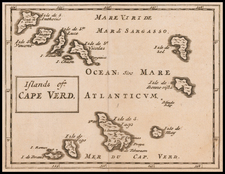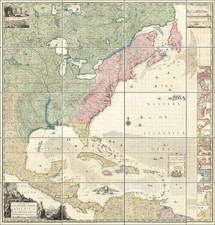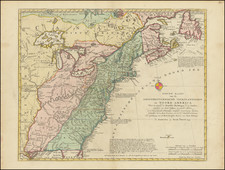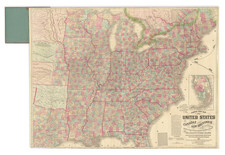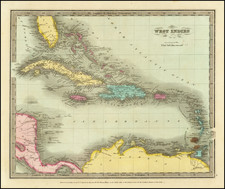Promoting Cedar Key Before Its Destruction in 1896
Interesting promotional map and time line, published by the Quebec Steamship Company.
The company promotes several different pleasure cruises from New York to Bermuda and the West Indies.
While not specifically disclosed in the various itineraries and promotional details on the verso, one of the routes apparently went as far as Cedar Keys, Florida, via Key West and Havana. From Cedar Keys, a traveller could cross back to Fernandina in the Jacksonville area, via the Florida Railroad.
The map indicates a printing date of 10-96, which would suggest is was issued in or about October 1896. Cedar Key had essentially been wiped off the map by a category 3 Hurricane on September 29, 1896, likely making this one of the past printed maps to promote travel via the Florida Railroad through Cedar Key.
Cedar Key
In 1860, Cedar Key became the western terminus of the Florida Railroad, connecting it to Fernandina Beach, Florida on the east coast of Florida. A town was platted on Way Key in 1859. On March 1, 1861, the first train arrived in Cedar Key, just weeks before the Civil War began. While the line was heavily damaged during the war, it was re-opened by 1868. and the Town of Cedar Keys was incorporated in 1869, and had a population of 400 in 1870.
When Henry Plant's railroad to Tampa began service in 1886, Tampa took shipping away from Cedar Key, causing an economic decline in the area. Earlier, growth in population had led to the Cedar Key town limits being expanded in 1881 and again in 1884. But with the decline in the local economy, the town limits were contracted in 1890.
The 1896 Cedar Keys a category 3 hurricane was the final blow. Around 4 am on September 29, 1896, a 10-foot storm surge swept over the town, killing more than 100 people. The hurricane wiped out the juniper trees still standing and destroyed all the mills. A fire on December 2, 1896, further damaged the town and permanently ending its run as a hub of commerce.











![Carte Reduite des Isles Antilles Dressee au Depost des Cartes et Plans de la Marine… [Large Inset of Virgin Islands]](https://storage.googleapis.com/raremaps/img/small/68206.jpg)
